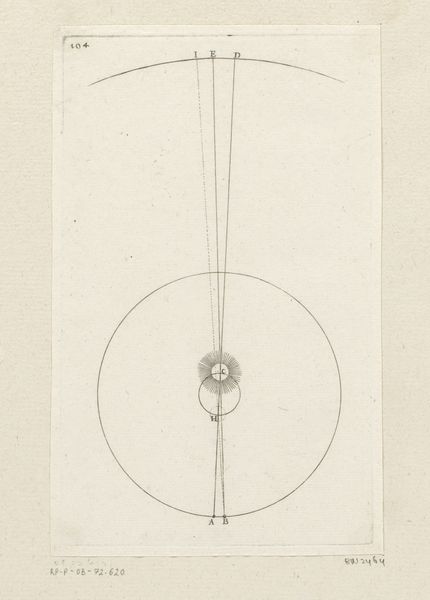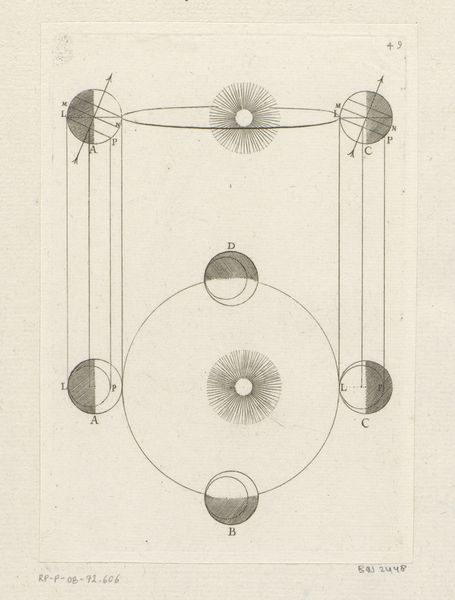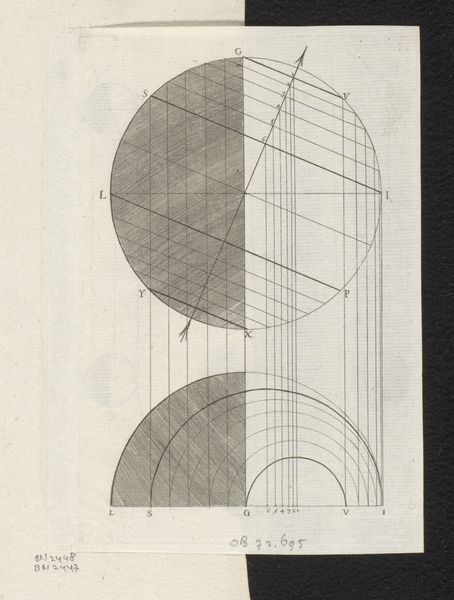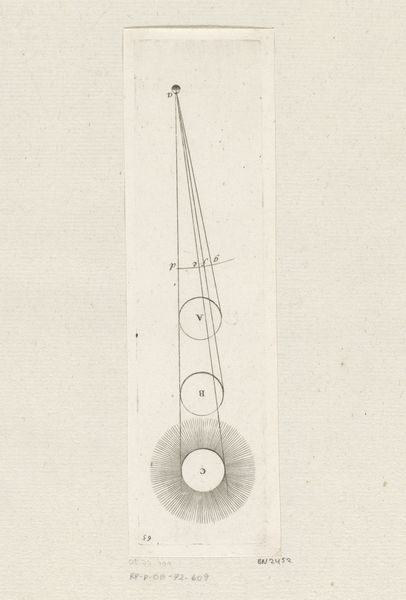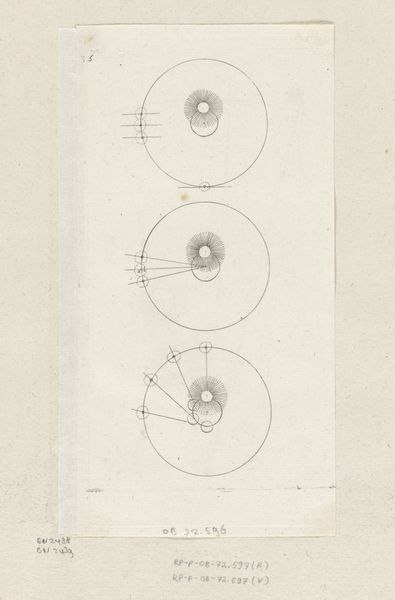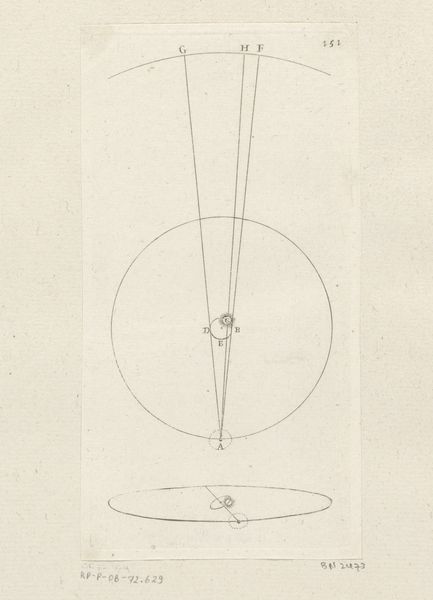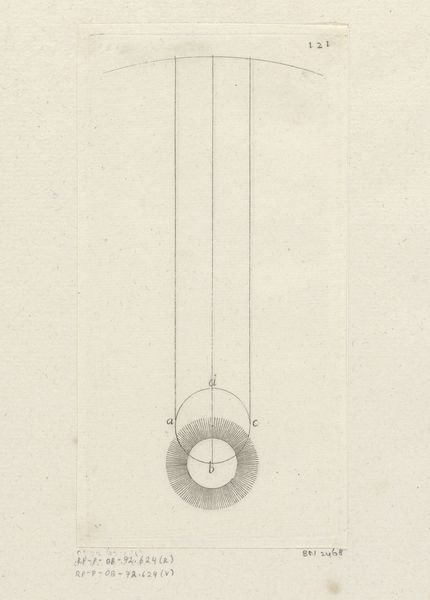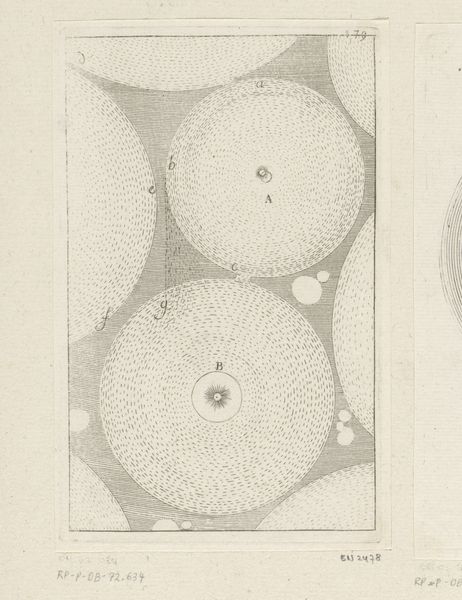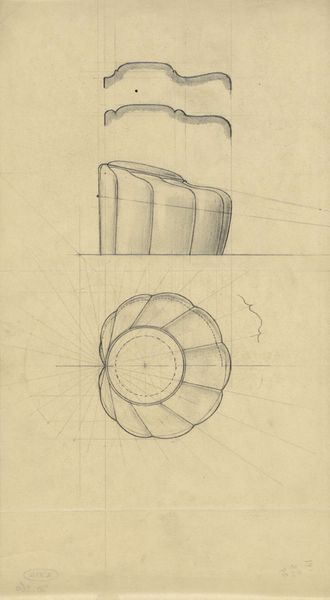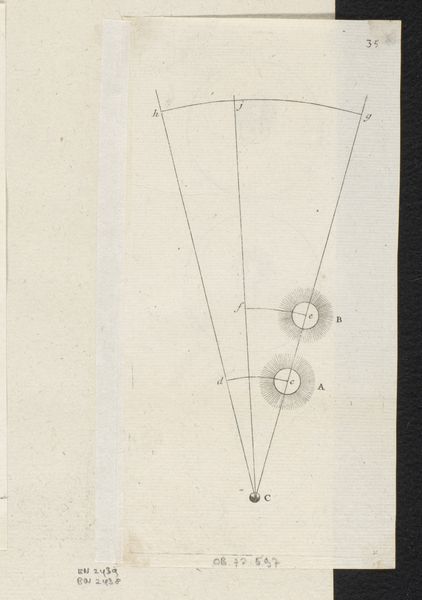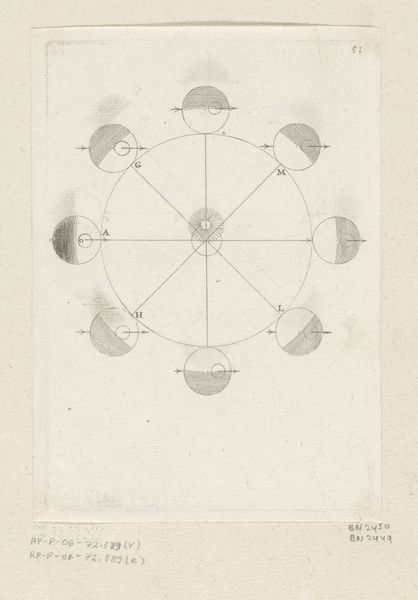
print, engraving
#
baroque
# print
#
old engraving style
#
geometric
#
line
#
history-painting
#
tonal art
#
engraving
Dimensions: height 617 mm, width 104 mm
Copyright: Rijks Museum: Open Domain
Editor: We’re looking at "Zon die rond het centrum van de wereld draait," or "Sun revolving around the center of the world," a 1706 engraving by Sébastien Leclerc I. It’s remarkably sparse, almost diagrammatic. I’m struck by the way it presents such a profound shift in understanding—what are your thoughts on this print? Curator: The political context is key. In 1706, the Copernican model was gaining ground, but religious and political institutions still heavily promoted a geocentric view. Leclerc's print isn’t necessarily endorsing heliocentrism, but by visually representing the sun revolving, he's participating in a larger societal dialogue. Do you notice anything about the style? Editor: It’s very linear, almost technical in its execution, and feels very different than how we artistically represent space and planets today. Curator: Exactly. That precise, almost clinical, line work was often used to disseminate information. Prints like these played a crucial role in popularizing and visualizing scientific concepts. Consider who was commissioning and viewing such pieces: were they wealthy patrons, institutions? How did those affiliations shape Leclerc's artistic choices? Editor: So it's less about artistic expression and more about navigating a delicate social and political landscape, visually arguing for new scientific ideas. Curator: Precisely! Artists operated within complex power structures. Visual language became a tool to subtly negotiate established viewpoints and emerging scientific thinking. Prints like this give us insight into how cultural shifts occurred not only within intellectual circles but within the wider public consciousness. Editor: I had viewed it as primarily about science, but now it makes sense to see this as being part of social change. Thank you! Curator: And I have to acknowledge the art historical role these scientific visualizations had on public audiences' perceptions and understandings about astronomy. Thanks.
Comments
No comments
Be the first to comment and join the conversation on the ultimate creative platform.
